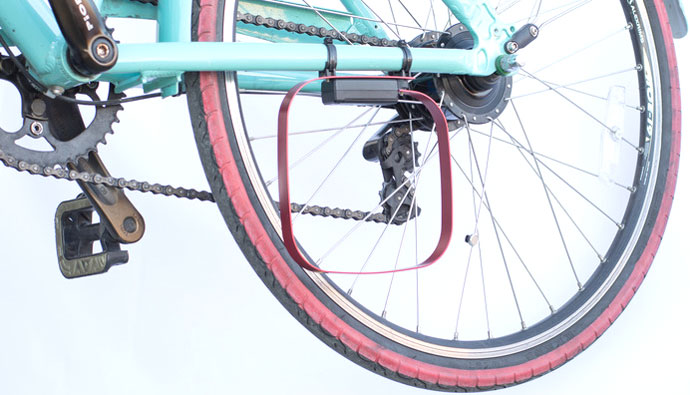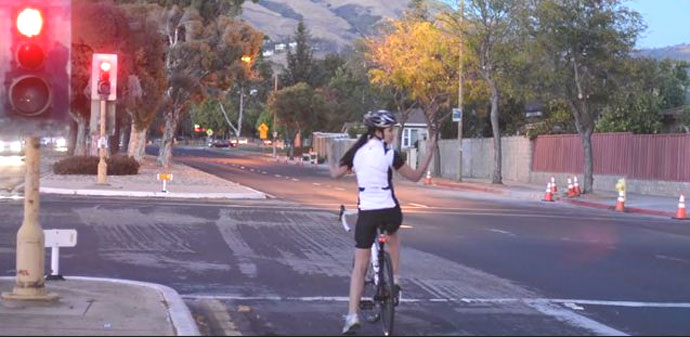
To ruin spice up a dull dinner party, bring up the subject of red light jumping by cyclists.
Motorists generally argue that the rules of the road should apply to everyone, while cyclists argue that if it wasn’t for cars we wouldn’t need traffic lights. But now there is a school of thought that suggests that jumping red lights might actually save lives.
A disproportionately high number of cyclists killed on urban roads are women. Campaigners, politicians and road safety specialists are doing their best to explain why this should be so.
A report by Transport for London’s road safety unit two years ago found women cyclists are far more likely to be killed by a lorry because, unlike men, they tend to obey red lights and wait at junctions in the driver’s blind spot. The study was not published as it was allegedly produced ‘solely to inform TfL policies’ – a decision that frustrated many campaigners.
The study cited that 86 per cent of the women cyclists killed in London in the five years to 2004 were struck by a lorry. 47 per cent of male cyclists were killed in the same way.
Cycling behaviours
Men will often pull ahead of stopped traffic. They also tend to move away quickly, sometimes jumping the red light altogether. Women on the other hand often stay behind the traffic, stopping on the left hand side in the driver’s blind spot. This can result in the driver cutting into the path of the cyclist with disastrous consequences.
It’s been suggested that some cyclists go through on red because traffic lights are unable to detect aluminium or carbon bikes – a problem tackled by a new accessory called the Veloloop.

Many traffic lights in towns and cities detect whether cars or lorries are waiting, and change their phasing accordingly, but the technology recognises only ferrous metals – such as the steel in cars and lorries. This leaves the rider of a carbon fibre, aluminium or titanium-framed bike all but invisible to traffic lights. Unreliable detection of bicycles by traffic lights can mean cyclists wait longer if there are no cars around. The frustration that ensues may prompt some to jump the red light.
The Veloloop attaches to your bike frame and at intersections triggers sensors just like a car does.

End the frustration of being invisible to traffic lights
An LED on the Veloloop lets the rider know if a sensor is being triggered. The device uses such little power that a pair of AAA batteries powers last for at least one year.
Red light jumping
Every time you jump a red light on a bicycle you are breaking the law and fuelling the popular misconception that cyclists are more careless than motorists. However, it is possible to understand why it happens without condoning it. According to a 2008 Freedom of Information Request, in the rich mix of pedestrians, cyclists and traffic lights that is London, no pedestrians were killed in collision with a cyclist going through a red light between 1998-2007. Cyclists were involved in only a small percentage of injuries to them. Over the same period, 12 pedestrians were killed by motorists jumping red lights a fact that did not prompt newspapers to trade headlines about cyclist red light jumping for articles about the danger from cars.
The technological deficiencies of traffic lights mentioned above are interesting, and it is right that they are addressed, but they do not explain why red light jumping occurs. The question of whether, in certain circumstances (and always once all those on foot have crossed), it is safer for a cyclist to cross a junction while the light is still red is complex. The majority of serious road traffic collisions involving bicycles may occur on or near junctions, but have little to do with red light jumping. The single most serious risk to cyclists in urban areas is posed by lorries pulling away from lights and/or turning left. Indeed, some suspect the disproportionately-high number of women cyclists killed by lorries in this way may be explained by a reluctance to wait in front of a queue of traffic at lights (and perhaps pull away just before the light turns green), and a willingness to wait beside the kerb on the inside of traffic.
The ethical choice
The ETA was established in 1990 as an ethical provider of green, reliable travel services. Over 30 years on, we continue to offer cycle insurance , breakdown cover and mobility scooter insurance while putting concern for the environment at the heart of all we do.
The Good Shopping Guide judges us to be the UK’s most ethical provider.

Roger Geffen – Policy Director, Cycling UK
You say:
“A report by Transport for London’s road safety unit two years ago found women cyclists are far more likely to be killed by a lorry because, unlike men, they tend to obey red lights and wait at junctions in the driver’s blind spot.”
Actually, it didn’t “find” anything of the sort. It merely noted that female cyclists seem to be more likely than male cyclists to be killed by left-turning lorries at traffic lights. It then speculated that this might be because they were less likely to jump the red lights. It presented no evidence for this.
That didn’t stop the media broadcasting the myth widely. It’s probably nothing more than a myth though, and doesn’t deserve to be given any further airing.
There are other more plausible explanations – though none has been confirmed.
whobiggs
As a former motor cyclist the lights don’t always work for 700lb of steel and aluminium either!
Jim Clark
So the British press are biased and lie in their articles complaining about cyclist but not motorists, well I’m sure there must be some mistake, next you’ll be saying the press ignore climate change.
We all know Newspaper owners are as honest as the day and would not tolerate any dishonesty by their reporters don’t we.
Reduce your carbon footprint, don’t buy a newspaper.
Mike Croker
And just how does a plastic hat make you ‘safe’? Might, or might not, reduce the risk of upper head damage in a fall, but ‘safe’ ?!?
Christina Hadleigh
In Brighton, more women cyclists ride along one-way streets the WRONG way than men.
They also take more STUPID risks than men. As the law stands, it’s still against the law to jump the lights for ALL ROAD USERS…
And when you tell them how STUPID they were to do what you just witnessed them do, they look so indignant at you, as if you had just insulted their baby or child un-nessasarly. THESE STUPID WOMEN ALSO TEACH THEIR CHILDREN to copy them on the roads, on their bikes. Mind you, this will cut down on a lot of Stupid cyclists on road users in the future, leaving the roads clearer for road users with COMMON SENSE…
And what right have cyclist got to ride and weave in & out of pedestrians on the pavements in the DANGEROUS way that they think is OK !
They should all be made to register their bikes and have 3rd-party insurance and be made responsible for any damage or fines their children create….
Simon fuller
What we really need is dedicated cycling lanes which could also include small electric vehicles such as battery powered scooters bikes and disability vehicles. Pedestrians need their own space apart from both cycles and motorised traffic. This would require a revolution of cycleway provision but would seriously help to tackle both the transport and climate change problems. It would free up the extended use of bikes and small battery power vehicles giving everyone an alternative to the motor car.